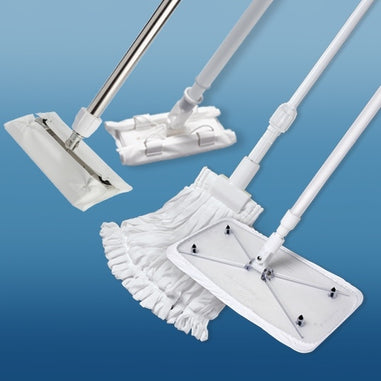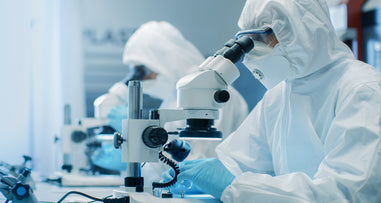- No products in the cart.
Swabs are the most commonly used tool in the lab. They are precision tools used by technicians to perform meticulous applications. So how do you know which swab to use for your particular application?
First, you need to be familiar with the different types of swabs and their properties. Then you will be able to match up the correct swab based on its properties with its specific application.
Types Of Swabs
- Cotton-Tipped Swabs
Cotton-tipped swabs are the most commonly used swabs since they are used for general purpose applications. They are one of the less expensive options and are not as durable as some of the other options. Cotton swabs have moderate absorbency capabilities, are best for one-time use, and leave behind fibers. These swabs come in taper tip, microtip, double tip, cleanroom, and low lint swabs.
- Foam-Tipped Swabs
Foam swabs have pointed tips that are wrapped in foam. They come as either open-cell polyurethane or closed-cell polyurethane swabs. Open-cell is super absorbent, more durable than cotton, ideal for use with alcohol, don’t leave fibers behind, and not for use with harsh solvents. Closed-cell is not as absorbent as open cell, stronger than open cell, resistant to abrasive surfaces, and just like open, doesn’t leave fibers behind.
The properties of the foam swabs make them ideal for applications such as heavy cleaning. Foam-tipped swabs come as fiber optic swabs, arrow tip swabs, and mini-tip foam swabs.
- Polyester Swabs
Polyester swabs have pointed tips for high-precision applications. They are resistant to solvents, ideal for scrubbing, and are super absorbent. These properties make polyester swabs ideal for collecting specimens in forensic analysis. Polyester tipped swabs come in flocked sampling swabs, diamond swabs, and pillow tip swabs.
- ESD Safe Swabs
ESD or electro-static dissipative swabs have foam or cotton tips with a dissipative handle. The handle dissipates static and prevents static buildup. These swabs are more expensive than polyester, foam, or cotton swabs. ESD safe swabs include polyester anti-static wipes, screen & keyboard cleaners, polyurethane foam ESD static control swabs, and tongue depressors.

Properties To Consider When Selecting A Swab
Now that you are aware of the different types of swabs, there are certain properties to take into consideration when choosing the proper swab to use with a particular application.
- Compatibility
You need to consider the components of the swab such as the tip and the handle and the components of the application to determine how the two will react with each other. The tip of the swab and the handle must be able to withstand the materials used.
If you’re applying liquids such as adhesives, coatings, and lubricants, are you going to want the swab to be absorbent? Should the swab be resistant to most solvents because adhesives, coatings, and lubricants are often applied with solvent chemicals that can affect or damage the swab? Are you going to need a fairly sturdy and durable swab?
The answer is ‘yes’ to all of the above. Therefore, the properties of the polyester swabs are going to best suit your needs because they are the most chemically resistant.
- Size And Capacity
Other properties to consider when choosing a swab are size and capacity. If you are applying small amounts of fluid to a predetermined area, you’re going to want a swab that has a small pointed tip. On the other hand, if you are applying fluid to a large area, you’re going to want a larger swab that will cover more area quicker and one that will absorb more liquid.
- Sensitivity To Static
The last property to consider is if static will be generated. Will static damage or affect the surface that the fluid is being applied to? If the application is being made to an electronic device, chances are that static will cause damage.
Circuits can become damaged by the rapid firing of high voltage electrostatic discharge or ESD. This static can originate from the material of the swab itself. To minimize the risk of ESD damage, you should use an ESD safe swab which is a swab with a handle that dissipates or breaks up and redirects the static.
Every swab has its own unique purpose depending on its properties. It’s just a matter of figuring out which swab has the desired features needed to efficiently handle specific applications.
Lab Pro offers a large variety of swabs and applicators. For over 40 years, Lab Pro Inc. has been committed to delivering the highest quality chemicals, lab equipment, distance learning kits, lab supplies, and cleanroom PPE apparel to medical device companies and laboratories worldwide. To learn more, visit the biggest Lab Supply showroom in California, or contact us online or at 888-452-2776.












































